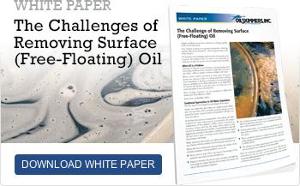Small Spills = Large Problems: A Look into Fueling Best Practices for the Railroad
Industry
Fact – fuel contains toxic substances. Thus, fuel spills can have a decidedly negative impact on the environment. Specifically, with regard to diesel fuel use in the transportation industry, the U.S. Environmental Protection Agency has strict regulations in place to help prevent the contamination of water and soil during fueling.

Companies that encounter frequent or consistent refueling, like those in the railroad industry, need to take precautionary measures to both minimize and manage spills when they occur. According to the Transportation Environmental Resource Center (TERC), these companies should consider the following three-pronged approach:
- Fueling area construction – TERC suggests several tips forconstructing
a fueling area that is designed to contain any spills:
- Create curbs or berms around the perimeter of the fueling area.
- Install a cover over the fueling area to help prevent runoff from washing away spilled fuel.
- Design the fueling area to contain at least 110 percent of the tank's volume.
- Proper fueling procedures – With the proper equipment, employee
training and protocols in place, fueling operations can allow for better spill prevention
and management. TERC notes to consider the following best practices:
- Equip dispensing hoses with automatic shutoff valves.
- Ensure workers are trained in proper fueling, maintenance and spill-management procedures.
- Post signs instructing fuel pump operators not to overfill gas tanks or leave tanks unattended while fueling.
- Spill management – Even when fueling areas are properly constructed and
fueling procedures closely followed, fuel spills will still occur. TERC suggests companies
prepare for spill management by implementing the following guidelines:
- Create an emergency response plan and ensure employees are aware of procedures.
- Post a summary of the response plan at the fueling station, including critical information such as the names of clean-up coordinators, the location of clean-up materials, and who to contact in case of a spill.
- Keep supplies such as rubber mats, drain plugs or temporary berms in the fueling area so storm drains can be blocked immediately if faced with a spill.
- For small spills, instruct operators to cover the fuel with absorbent pads or other absorbent material and ensure the absorbent materials used are properly disposed of.
- Instruct operators to clean up every spill, immediately, to prevent fuel from washing down a drain or evaporating.
- Install catch basins on either side of and between rails to collect fuel spills and help prevent soil contamination.
Additionally, as related to the final point above regarding the installation of catch basins, since catch basins often also collect rain along with spilled fuel, railroad fueling facilities may also want to consider installing a device on the basin that will then separate the water and fuel, and also remove the fuel from the water.
Installing a device that separates and removes fuel from the basin, such as a tube-type oil skimmer, ensures that remaining water is suitable for discharge into a sewer system.
How does skimming work?
Tube-type oil skimmers feature a floating, closed-loop tube that skims the wastewater’s surface. Oil/fuel adheres to the outside of the tube and is drawn into the oil skimmer and through ceramic scrapers that remove the oil/fuel. The tube then returns to the water’s surface to collect more oil/fuel, while the recovered oil/fuel flows to a collection container.
For more information on how tube-type oil skimming solutions can remove fuel from water at your fueling facility, contact us today at info@oilskim.com or 800.200.4603.
For the Railroad industry, or any industry, download the white paper, "The
Challenges of Removing Surface (Free-Floating) Oil" to understand your oil
removal options.

